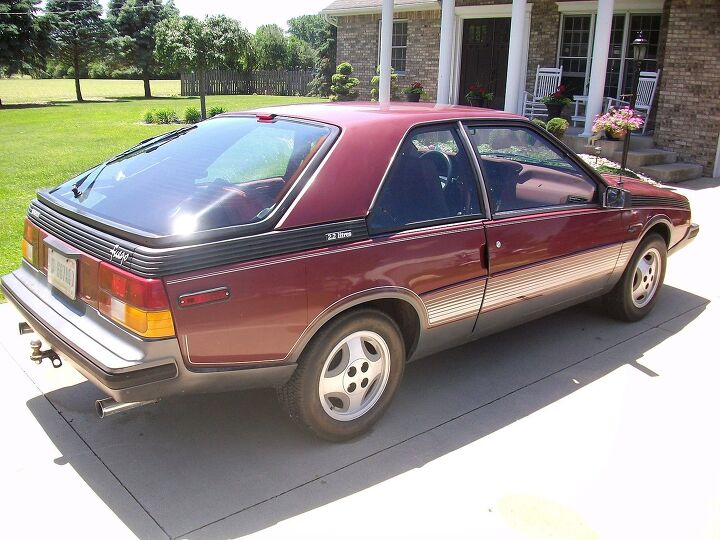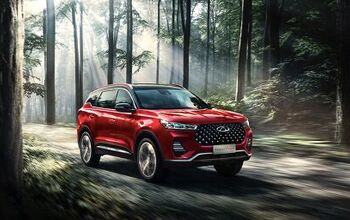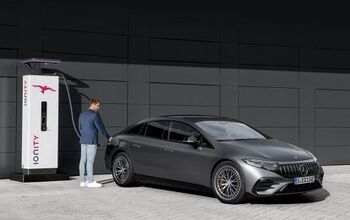Rare Rides: The 1984 Renault Fuego, or Feu D'Artifice

Back in the early 1980s, Renault/Jeep/AMC dealers sold quite the assorted lineup of vehicles in the North American market. Shortly after it obtained a 59 percent ownership stake in AMC, Renault launched a new sporty coupe that was assuredly lit.
Come along and check out the Fuego.
We’ve had some Renault vehicles before in the Rare Rides series. First up was the Alliance GTA – the Renault built in the very same Kenosha, Wisconsin factory (and at the same time) as the Chrysler Fifth Avenue. Then came a later version of Renault’s 5, in GT form — a modification of the LeCar that Americans didn’t much like. Most recently we went full-fat with the mid-engine R5 Turbo, which North America certainly never received. It was asking a tidy $122,000.
Today’s Fuego can be had for much less than even the sales tax on that R5.
As the 1970s drew to a close, Renault needed a replacement coupe for the 15 and 17 models, which were interesting looking but very dated. Starting with the conservative 18 sedan’s underpinnings, stylists at Renault drew up a sporty coupe body to entice the new buyer of the ’80s. Suspension and interior components were new and unique to the Fuego when it debuted in 1981, but would filter into other Renaults as time passed.
Renault was determined that the world would take note of the Fuego, so it threw some technology its way. For 1983, it was the first car with remote keyless entry. It was also the first four-seat sports car designed in a wind tunnel. There was also a turbodiesel version, which in 1982 was declared the fastest diesel car in the world. Top speed of that diesel was 111 miles per hour. Another first: There were radio controls on the steering wheel in 1983, paving the way for Pontiac steering wheel buttons in the years to come.
The Fuego was available between 1982 and 1985 at AMC dealers. Turbo models were available in the U.S. from the outset, featuring a 1.6-liter inline-four producing 107 catalytic-dosed horsepower. The naturally aspirated 2.2-liter engine was the only other option — a Peugeot unit generating around 114 horsepower in American applications.
Though the Fuego sold well internationally and received a favorable rating from American journalists (MotorWeek review below), customers were not so keen. The design team at Renault wasn’t happy, either, as the big bumpers and sealed beam headlamps required by American legislation interfered with the design’s original idea.
American Fuego sales cut off a couple of years before the rest of Europe, which received the coupe until 1987. It persisted even longer in South America, where you could buy a new one at your local Renault dealer through 1993. At that time, money problems at Renault forced the cancellation of the Fuego II (which was to look similar to the Alpine GTA), and the coupe’s replacement in North America — the Alliance GTA we discussed previously.
The 1984 model we’re eyeing today is presently located somewhere in Indiana, probably near some corn. It features a manual transmission and a red/black interior scheme to match the exterior colors. Fuegos came standard with a high level of equipment for the time, and this one’s no exception. There’s non-functional AC, plus a CB radio. Unsurprisingly, it needs a couple of things, but overall looks clean and solid. Listed on eBay with no reserve, perhaps the B&B can establish a value for this hot ticket item.
[Images: seller]

Interested in lots of cars and their various historical contexts. Started writing articles for TTAC in late 2016, when my first posts were QOTDs. From there I started a few new series like Rare Rides, Buy/Drive/Burn, Abandoned History, and most recently Rare Rides Icons. Operating from a home base in Cincinnati, Ohio, a relative auto journalist dead zone. Many of my articles are prompted by something I'll see on social media that sparks my interest and causes me to research. Finding articles and information from the early days of the internet and beyond that covers the little details lost to time: trim packages, color and wheel choices, interior fabrics. Beyond those, I'm fascinated by automotive industry experiments, both failures and successes. Lately I've taken an interest in AI, and generating "what if" type images for car models long dead. Reincarnating a modern Toyota Paseo, Lincoln Mark IX, or Isuzu Trooper through a text prompt is fun. Fun to post them on Twitter too, and watch people overreact. To that end, the social media I use most is Twitter, @CoreyLewis86. I also contribute pieces for Forbes Wheels and Forbes Home.
More by Corey Lewis
Latest Car Reviews
Read moreLatest Product Reviews
Read moreRecent Comments
- Tassos Jong-iL North Korea is saving pokemon cards and amibos to buy GM in 10 years, we hope.
- Formula m Same as Ford, withholding billions in development because they want to rearrange the furniture.
- EV-Guy I would care more about the Detroit downtown core. Who else would possibly be able to occupy this space? GM bought this complex - correct? If they can't fill it, how do they find tenants that can? Is the plan to just tear it down and sell to developers?
- EBFlex Demand is so high for EVs they are having to lay people off. Layoffs are the ultimate sign of an rapidly expanding market.
- Thomas I thought about buying an EV, but the more I learned about them, the less I wanted one. Maybe I'll reconsider in 5 or 10 years if technology improves. I don't think EVs are good enough yet for my use case. Pricing and infrastructure needs to improve too.









































Comments
Join the conversation
My college flight instructor had one (this was 1987) and I knew it was a Fuego because it was tan with huge letters on the side that gave the name. Great guy and I thought at the time had odd taste in cars.
Eventually it got a successor in the Laguna coupe, a car that from the rear quarters looks like a mini Aston Martin - just a shame about the Laguna hatchback derived googly front lights.